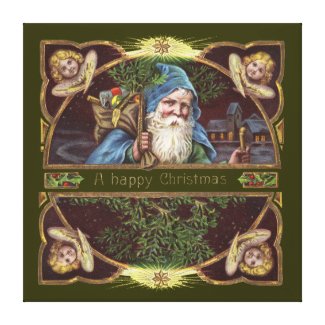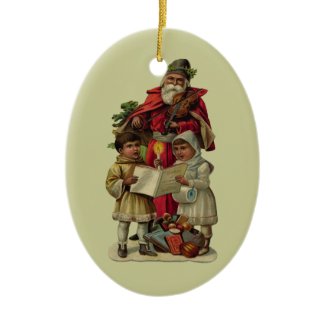Vintage Christmas Art
Christmas art inspires us to look back at earlier years when Christmas traditions were young. What was Christmas like when our grandparents and great-grandparents grew up? The vintage Christmas images printed on postcards and in Victorian Christmas books give us a clue -- Vintage Christmas celebrations were just as popular then as they are today. The antique art that we still see today in antique shops from the early 1900s and late 1800s show an abundance of sweet paintings of Santa Claus, holly, Christmas trees, and red-cheeked children with wide grins.Commercial Christmas Art
In the first half of the 1900s, Christmas celebrations ranged from home-made ornaments and gifts to department store toys. The oil lamps and candles on trees in the 1800s gave way to electric lights and bulbs around 1913. Vintage Christmas was transformed into a commercial bevy of products laden with Santa Claus images -- most of these early commercial images were crafted quite well with exquisite attention to detail.Christmas has emerged today as quite a different celebration than its origins, and its art has emerged and modernized as well. Christmas started with old customs that dated back to the merger of traditions from Pagan Europe and early Christianity. By medieval days, The main figurehead became Father Christmas. Father Christmas was portrayed with a long beard and cloak, but would be shown wearing blue, green, brown or red suits. By 1910, Santa Claus standardized on the red suit he wears today.
Image of Father Christmas and Odin
Today's image of Santa Claus, or Father Christmas, started with the Norse God Odin, the ruler of Asgard. Odin wore a blue cloak and had a long white beard and a wreath around his head. Modern-day Santa Claus merged Odin with the Christian legend of Saint Nicholas of Myra who visited Dutch children on Christmas eve to replace straw-filled shoes with sweets. Father Christmas came to represent the Christmas spirit of goodwill.During the Victorian (late 1800s) and Edwardian periods (early 1900s), inexpensive printing methods brought the image of Santa and Christmas to everyone -- in the form of children's books and Christmas cards. The commercialization of Christmas began.. The images of Father Christmas (Santa Claus) became well established as the definitive figurehead of the Christmas season.



No comments:
Post a Comment